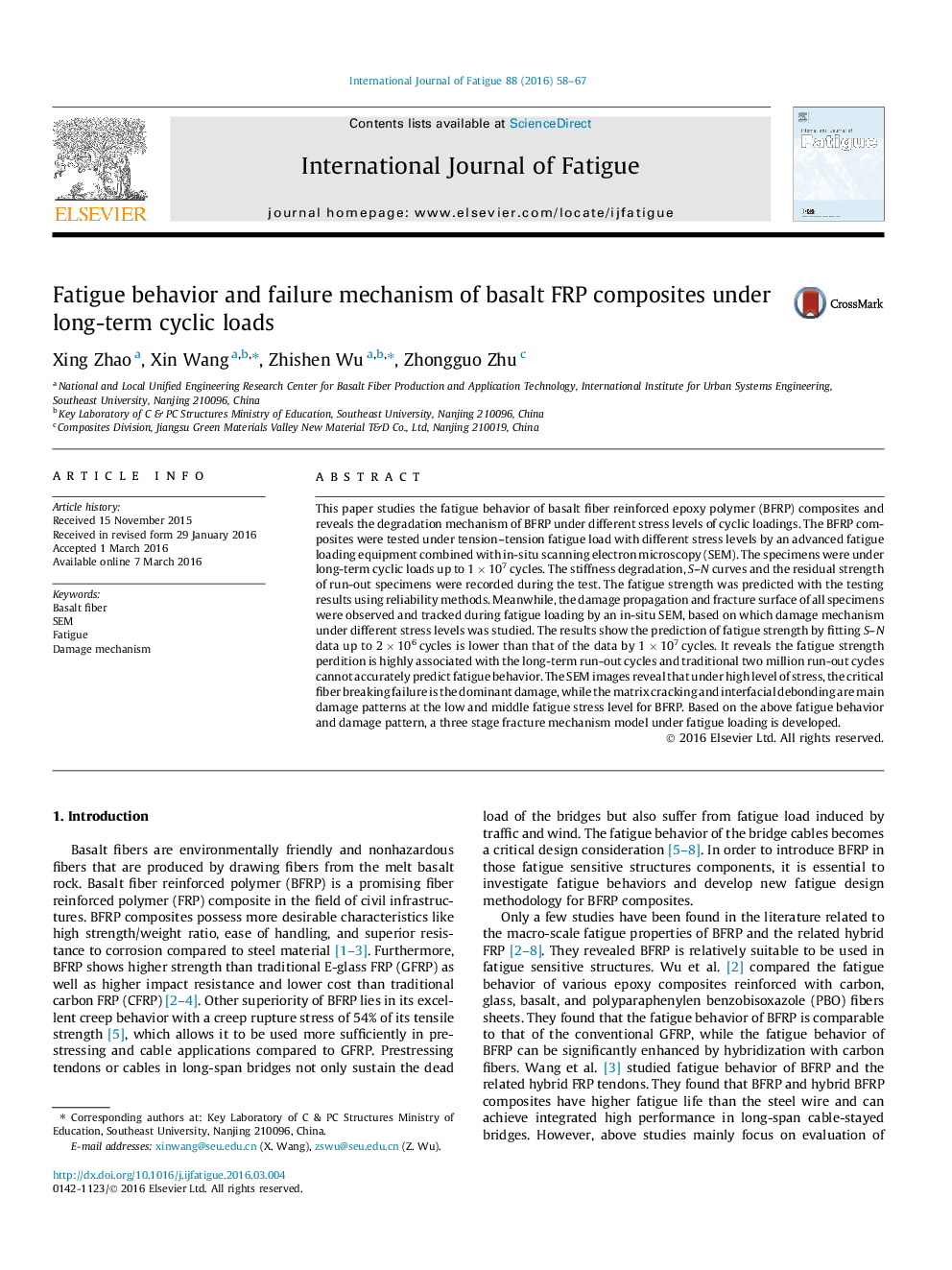| Article ID | Journal | Published Year | Pages | File Type |
|---|---|---|---|---|
| 777521 | International Journal of Fatigue | 2016 | 10 Pages |
•A bi-linear phenomenological fatigue model for BFRPs is proposed.•The fatigue strength was predicted with the testing result using reliability methods.•Residual strength of BFRP composites can be enhanced below the fatigue limit.•The damage growth was tracked during fatigue loading by in-situ SEM observations.•Three different damage patterns appear at different fatigue stress levels for BFRP.
This paper studies the fatigue behavior of basalt fiber reinforced epoxy polymer (BFRP) composites and reveals the degradation mechanism of BFRP under different stress levels of cyclic loadings. The BFRP composites were tested under tension–tension fatigue load with different stress levels by an advanced fatigue loading equipment combined with in-situ scanning electron microscopy (SEM). The specimens were under long-term cyclic loads up to 1 × 107 cycles. The stiffness degradation, S–N curves and the residual strength of run-out specimens were recorded during the test. The fatigue strength was predicted with the testing results using reliability methods. Meanwhile, the damage propagation and fracture surface of all specimens were observed and tracked during fatigue loading by an in-situ SEM, based on which damage mechanism under different stress levels was studied. The results show the prediction of fatigue strength by fitting S–N data up to 2 × 106 cycles is lower than that of the data by 1 × 107 cycles. It reveals the fatigue strength perdition is highly associated with the long-term run-out cycles and traditional two million run-out cycles cannot accurately predict fatigue behavior. The SEM images reveal that under high level of stress, the critical fiber breaking failure is the dominant damage, while the matrix cracking and interfacial debonding are main damage patterns at the low and middle fatigue stress level for BFRP. Based on the above fatigue behavior and damage pattern, a three stage fracture mechanism model under fatigue loading is developed.
